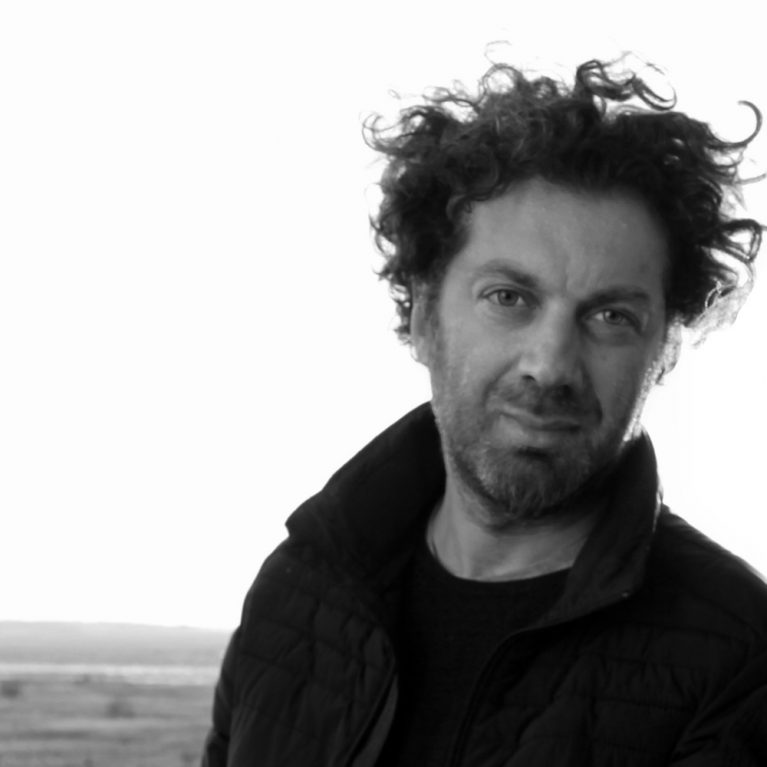interviews
Ila Bêka’s Milan
I got to know Milan as a teenager. As a music fan, I’d set off from Friuli to come and see concerts at the legendary Rolling Stone nightclub...

What are the origins of your relationship with Milan?
I got to know Milan as a teenager. As a music fan, I’d set off from Friuli to come and see concerts at the legendary Rolling Stone nightclub. I remember some amazing concerts there by Mano Negra, Urban Dance Squad, Primus and Lou Reed. But sometimes I’d even come to Milan just to search for some hard-to-find record. There and back in a day, over nine hours in the train! Then, during my university years in Venice, I had a friend who was studying at Milan Polytechnic, so I often came to see him. He lived in the Barona district, which is probably why it’s the area of Milan I’m most familiar with. Lastly, three years ago, when Louise and I did the Spiriti project for Fondazione Prada, we lived for a while in the surrounding area, which is undergoing considerable transformation. Nowadays I come to Milan frequently and it’s always a great pleasure.
What is your favourite historical building in the city?
Even though I don’t actually like it that much, I’ve always had a soft spot for the Monument to Sandro Pertini by Aldo Rossi. Maybe it’s partly because the work has managed to stay there despite all the criticism it’s had to endure over the years. I’m certainly not attracted by its monumentality, but by the project’s optimistic hope to constitute an expression of collective will. What interests me about architecture is the human dimension, and for me this shines through in the simple words used by Aldo Rossi, who was my professor in Venice, to describe the monument’s context: “A peaceful square in Lombardy, a place where people can meet, eat a sandwich or take a group photo.” Another Milanese building that stands out in my mind is the Casa al Villaggio dei Giornalisti (or “House in the Journalists’ Village”) by Figini, not so much as a model of rationalist architecture, but on account of its extroverted, slender quality that opens up to the wind and sun. I’ve always found the Torre Velasca and Ca’ Brutta to be fun buildings, too. Coming out from Milano Centrale and seeing Gio Ponti’s Pirelli Tower is always a reassuring sight. It has a perfect nickname: the “Pirellone”, literally meaning “Big Pirelli”. And lastly, there’s the Church of Santa Maria presso San Satiro by Bramante, and Milan’s absolute masterpiece, the Duomo, which always leaves me spellbound.
What do you normally do when you are in Milan?
In Milan I tread very traditional paths, but sometimes it’s fun to get a bit lost among the streets in the centre or in the Isola district. A place I definitely like to visit is the Studio Museo Castiglioni, the extraordinary container of an entire life made of thoughts, fantasies, games and inventions. I always pass by the Triennale, too. I’m very attached to it, since we’ve projected many of our films there. The Pinacoteca di Brera art gallery is another great place. But when I can, I also enjoy just getting on a random tram and seeing where it takes me.
Is there a shop in Milan where you buy special items?
I don’t generally get much pleasure from accumulating things, but I remember two shops that I’m still fond of. One is hidden among the side streets of Corso Buenos Aires and it sells used books. I’ve often found great volumes there and met very nice people. The other store, right in the centre, is specialised in classical and contemporary music. There you really can find the un-findable! Perhaps I feel a bit of nostalgia for the record and book shops that are disappearing.
What is your favourite cafe, bar or restaurant in Milan?
Every evening, after a day’s filming at Fondazione Prada, we’d go with the crew to find somewhere where we could let our hair down. I have pleasant memories of finding this sincere and timeless dimension in the Ortica and Sala Venezia dance-halls, between a dance and a toss of a bowling ball. Then there’s the Arci Bellezza club, with its courtyard, its regulars and its film history. And I never forget Shiro’s chirashi!
Which new buildings have transformed the face of the city?
For Milan, I think Fondazione Prada has been a very important cultural and architectural project. There’s a great dialogue between the diverse types of spaces, but also with the works on display. I find the Vertical Forest by Stefano Boeri fascinating. I’d like to see a macro film about all the little animals that inhabit it – snails and slugs, ants and birds. There must be an extraordinary world hidden in there. Buildings such as these are bringing a different light to Milan, and they confirm that architecture is always at the forefront in transforming the perception of a city.
What would you transfer to Milan from another place?
Although I was born in the North with its famous banks of fog – which I absolutely adore – I’d nonetheless lend Milan a bit of Rome’s sky and light. In exchange for a bit of Milanese energy and enthusiasm, though!


